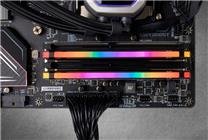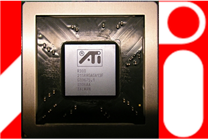The Curious Case of DDR4 Memory Pricing: A Market Shift
Summary:
- DDR4 Memory Prices Surging: Unexpectedly, DDR4 memory is currently priced higher than DDR5 due to ongoing demand and limited production.
- Production Cessation Delayed: Despite plans to cease DDR4 production, major manufacturers may continue due to unanticipated demand spikes.
- Market Dynamics Favor Taiwanese Producers: Companies like Nanya and Winbond are benefiting from this unique market situation, reinforcing supply challenges.
In a surprising twist within the memory market, DDR4 memory is now commanding higher prices than its successor, DDR5. This peculiar phenomenon, identified by industry analysts, stems from a confluence of evolving market dynamics and persistent consumer demand.
Factors Behind the Pricing Inversion
Originally, the expectation was that DDR4 production would diminish as manufacturers shifted focus to DDR5, which is more efficient and capable of meeting modern computing needs. The three leading manufacturers—Samsung, SK Hynix, and Micron—had plans to phase out DDR4 production, anticipating a significant drop in demand.
However, contrary to expectations, demand for DDR4 remains robust in certain sectors, leading to an imbalance in the supply chain. This resurgence in demand has resulted in rising spot prices for DDR4 memory, making it not just competitive but sometimes more expensive than DDR5.
Manufacturing Decisions and Future Projections
Initial reports suggested that major manufacturers like Samsung were reconsidering their plans to halt DDR4 production, postponing the cessation until well into 2026. Yet, recent statements from industry leaders indicate that these rumors may be unfounded. Chen Libai, chairman of a prominent memory producer, clarified that the transition to manufacturing DDR5 involves new technologies and equipment, making it economically unviable to revert to DDR4 production.
Manufacturers had dismantled original equipment necessary for DDR4, solidifying the decision to phase out its production. Consequently, the landscape appears to favor manufacturers still producing DDR4, particularly those located in Taiwan, such as Nanya and Winbond.
Lasting Implications for the Market
Market analysts predict that the trend of rising DDR4 prices and scarcity will persist for at least the next two years. This scenario is advantageous for Taiwanese companies that continue to supply DDR4, as demand is outpacing current capabilities.
Given the complexity of global supply chains, these developments underscore the unpredictable nature of technology markets. Memory price dynamics will play a critical role in shaping purchasing strategies for consumers and business entities alike.
Conclusion
The unexpected rise in DDR4 memory prices, surpassing that of DDR5, illustrates a fascinating shift in the technology market. As major manufacturers navigate this complex landscape, the ongoing demand for DDR4 may redefine production strategies in the foreseeable future. Companies like Nanya and Winbond are positioned well to capitalize on this shift, highlighting the ever-evolving nature of the tech industry.
Understanding these dynamics is essential for industry stakeholders, including suppliers and consumers, as they adapt to the changing landscape of memory products.






